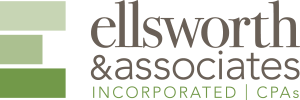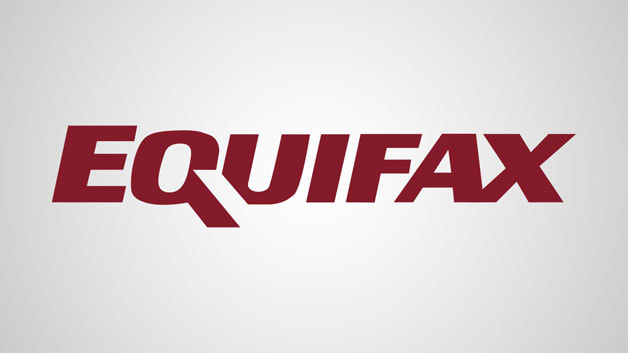|
If you are eligible, now is the time to begin planning to take full advantage of your employer’s health flexible spending arrangement (FSA) during 2018.
FSAs provide employees a way to use tax-free dollars to pay medical expenses not covered by other health plans. Because eligible employees need to decide how much to contribute through payroll deductions before the plan year begins, many employers this fall are offering their employees the option to participate during the 2018 plan year. Interested employees wanting to contribute during the new year must make this choice again for 2018, even if they contributed in 2017. Self-employed individuals are not eligible. An employee who chooses to participate can contribute up to $2,650 during the 2018 plan year. That’s a $50 increase over 2017. Amounts contributed are not subject to federal income tax, Social Security tax or Medicare tax. If the plan allows, the employer may also contribute to an employee’s FSA. Throughout the year, employees can then use funds to pay qualified medical expenses not covered by their health plan, including co-pays, deductibles, and a variety of medical products and services ranging from dental and vision care to eyeglasses and hearing aids. Interested employees should check with their employer for details on eligible expenses and claim procedures. Under the use-or-lose provision, participating employees often must incur eligible expenses by the end of the plan year, or forfeit any unspent amounts. But under a special rule, employers may, if they choose, offer participating employees more time through either the carryover option or the grace period option. Under the carryover option, an employee can carry over up to $500 of unused funds to the following plan year—for example, an employee with $500 of unspent funds at the end of 2018 would still have those funds available to use in 2019. Under the grace period option, an employee has until two and a half months after the end of the plan year to incur eligible expenses — for example, March 15, 2019, for a plan year ending on Dec. 31, 2018. Employers can offer either option, but not both, or they can offer none at all. Employers are not required to offer FSAs. Accordingly, interested employees should check with their employer to see if they offer an FSA.
0 Comments
Loaning to friends and relatives is a delicate business, and not simply because of the tension it can cause in your relationships. There are tax issues at play also. If you must loan money to somebody close, here are some tips to do it correctly as far as the IRS is concerned. Charge InterestYes, you should charge interest, even to friends and family. If you don’t charge a minimum rate, the IRS will imply interest in the loan and tax you for the interest they assume you are getting. This can happen even if you’re not getting a dime. Charge Enough InterestNot only should you charge interest, the amount must be reasonable in the eyes of the IRS. If it's not, the IRS will imply interest at their minimum applicable federal rates (AFRs). To stay on the safe side, always charge the interest rate at or above these AFRs, available on the IRS website. The good news is these interest rates are low and usually lower than the prime interest rate. Know the ExceptionsIf you don’t want to charge interest, you don’t have to IF:
If you don’t charge interest and the loan is used to purchase income-producing property such as capital equipment or to acquire a business, special tax rules apply. In this case it’s good to ask for help. Get It in WritingIf you expect repayment, put the terms of your loan in writing. There are a variety of basic loan document formats online that you can use. Creating a loan document may seem needlessly formal when dealing with a friend or family member, but it’s important for two reasons:
Document your tax code compliance. By recording the terms and charging a specified interest rate you can show you are within tax code rules. Avoid misunderstandings. Creating a written document will make it clear that it is a real loan, not an informal gift. Your friend or relative will know that you expect them to pay you back and when you expect repayment. The two most popular shopping days of the year are not far away. Black Friday, on November 24, is the day after Thanksgiving when brick-and-mortar retailers entice shoppers with exceptional deals. Online retailers offer a second round of shopping on November 27. As sellers start to bombard you with ads and emails, here are ideas to help take advantage of these shopping-day spectacles.
Create a list before you shop. This can help cut needless and thoughtless purchases in-store or online. Consider breaking your list into groups, like:
Create a budget and stick to it. If you take time before you shop to see what deals are out there, you'll be less likely spend more than you wanted to. After you make your budget, stick to it. Start looking at ads early. Give yourself plenty of time to check and compare ads. Remember, stores are competing against each other for business. This means there could be equivalent sales and deals at multiple places, including online. Once you find the best ads, you can create a shopping plan. Find the best way to make your purchases. Check both in-store and online sales. Figure out the best way to make your purchases, even if that means buying some things at conventional stores and waiting to take advantage of other deals online. Make sure the deal is worth it. Do your homework. This means you should check the price history, verify the make and model of products (especially for electronics), and read reviews. Make sure there's an actual discount, not just an increased price with a coupon attached. Double-check the return policy. One way to avoid buyer's remorse is to know the return policy for in-store and online purchases. Every business has a unique return policy, which can change for Black Friday deals. Know the return policy, no matter how big or small the purchase. Don't stress out. Try not to let enthusiasm turn into stress and worry. It is easy to make a bad purchase decision caused by the chaos these annual sales events create. Remember, you'll always have more options, no matter what happens this year on Black Friday. Most businesses have seasonal holiday sales in stores and online, so there's ample time left for holiday shopping. If you use an installment sale to help sell real estate, you can benefit from tax deferral and potentially lower your overall tax bill. But you need to watch out for certain tax traps if you do. What Is an Installment Sale?You create an installment sale when you receive payments for sold property in the tax year of the sale and at least one other tax year. For instance, if you sell real estate for a profit in 2017 and receive payments in 2017 through 2021, your real estate transaction is an installment sale. Tax ImplicationsAn installment sale creates a tax event in each year you receive payments. In the above example, part of your gain is taxable in 2017 and each year through 2021. Be aware that real estate held longer than one year qualifies for favorable capital gains tax treatment. The tax rate on long-term capital gains is from 0 to 20 percent, compared with the top ordinary income tax bracket of 39.6 percent. You could also to pay all the tax due on the sale upfront, to avoid paying tax on the installments in future years. In some cases, you'll reduce your overall tax bill this way, though it may require some help with tax planning. Benefits of an Installment SaleWith an installment sale, you may be able to lower your total tax on the sale of the property by spreading this income out over several years. In addition, the buyer will typically pay a rate of interest to you higher than a typical bank loan for the rest of the amount due. Installment Sale Tax TrapsRelated parties caution. If you sell property to a related party and the property is then disposed of within two years, in most cases, all the remaining tax comes due at once. The tax law definition of “related parties” is more expansive than you might think. It includes:
To avoid this major tax surprise, consider stipulating in the contract that the property can’t be disposed of within two years. Depreciation recapture potential. Also be cautious if you took any depreciation on the property in prior years. In some circumstances you will owe extra tax related to that depreciation when you sell the property. Gains not losses. Be aware that installment sale treatment is only available for gains, not losses. Other special rules may apply, so reach out if you need advice specific to your situation. Of course, tax reform discussions now in Congress might impact how installment sales and long-term capital gains are treated. If you're planning an installment sale, consider contacting Ellsworth & Associates for a consultation to discuss the tax implications. Banks are a necessary tool to navigate our daily financial lives. Unfortunately, there are aggravating practices at many banks that drive us crazy or cost us money. Here are five tips to get more out of your bank and pay less.
Earlier this year, hackers managed to breach the security of Equifax, one of the three national credit reporting agencies. More than 143 million Americans — almost half the US — were exposed to the attack, and may have had their personal information stolen, including names, birthdates, Social Security numbers, and driver's license numbers.
Equifax is still figuring out precisely whose data was compromised. While you wait to find out, it's worth taking a few proactive steps to make sure hackers do not misuse your information. Start checking. Visit Equifax's website at equifaxsecurity2017.com and enter your last name and the last six digits of your Social Security number. The site will tell you whether it's likely or not your data has been exposed, and put you on a list to get more information. You can also sign up for one year of credit monitoring provided by Equifax. Watch your statements. Start checking your credit card statements, and pay careful attention to cards you don't use often. The first reports from the breach were that hackers may have been making charges on cards that were not used frequently. Check your credit reports. You can look for suspicious items on your reports, such as new accounts being opened in your name, at all three credit report agencies: Equifax, Experian, and TransUnion. Free annual reports are available at annualcreditreport.com. Freeze your credit. If you suspect you may be a victim of identity theft, you can place a credit freeze on your profile at each of the three credit reporting agencies. This stops anyone from opening new accounts in your name. Keep in mind that you'll have to unfreeze your accounts if you want to apply for new loans or make your credit accessible for things like job applications. File your taxes early. One of the most common ways identity thieves use your information is to try to claim a tax refund with your data. This was the most common scam in 2016, according to the Better Business Bureau. If you file your tax return as early as possible, you shut down this opportunity for any potential thieves. Donations are a terrific way to give to a worthy charity, and they also give back in the form of a tax deduction. Unfortunately, charitable donations are under scrutiny by the IRS, and many donations without suitable documentation are rejected. Here are six things you need to do to make sure your charitable donation will be tax-deductible.
Remember, charitable giving can be a valuable tax deduction — but only if you take the right steps. As the year comes to an end, there are several tax-saving ideas you should take into consideration. Use this checklist to ensure you don't miss an opportunity before the year is over.
While every retirement plan has similar early withdrawal penalty exemptions, they are not all the same. Being aware of these slight differences within 401(k) plans can help you get around a 10 percent tax penalty if you withdraw funds from the plan before reaching age 59 1/2. This is the case because a basic rollover of funds into a Traditional IRA is a readily available option to avoid the penalty. You should consider rolling over your 401(k) into an IRA prior to early distribution when:
Remember, by rolling the funds prior to pulling the funds for pre-retirement distribution you are avoiding the early withdrawal penalties, but you must still pay the applicable income tax. Bonus Retirement Plan TipsTwo other quirks in the retirement tax code to be aware of:
The IRS recently announced important figures for 2018, using figures based on the Consumer Price Index published by the Department of Labor. Use these early figures to start developing your tax strategies for next year. Tax Brackets: There are currently seven tax brackets ranging from 0 percent to 39.6 percent. Each of the income brackets rose between 1.9 and 2.1 percent. Personal Exemption: $4,150 in 2018 (up $100 from 2017) Standard Deductions
Other Key Figures:
Remember: These early IRS figures are prior to any potential tax law changes currently under consideration in Washington D.C.
|
Archives
February 2018
Categories
All
|
|
Ellsworth & Associates, Inc. CPAs
513.272.8400 Cincinnati: 9624 Cincinnati Columbus Road, Suite 209, Cincinnati, OH 45241
|
© 2017 Ellsworth & Associates, Inc.
|











 RSS Feed
RSS Feed